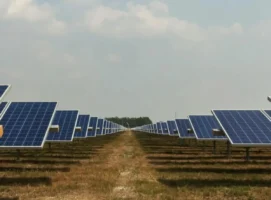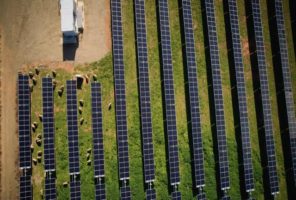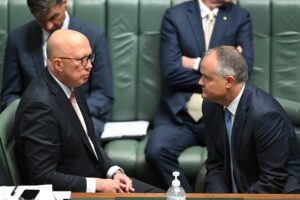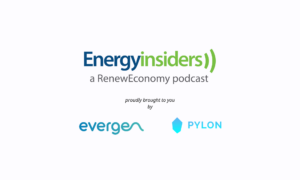Researchers from the University of New South Wales (UNSW) say they have set a new world record efficiency for a kesterite solar cell, a type of solar cell that has the potential to deliver long-term improvements in solar photovoltaic technology.
As part of a larger worldwide effort to find materials to pair with traditional silicon cells to form a tandem solar cell capable of boosting efficiency – as compared to a single junction solar cell – the engineers from the UNSW’s School of Photovoltaic and Renewable Energy Engineering achieved a best-ever efficiency of 13.2 per cent for high bandgap kesterite solar cells, which had been enhanced with hydrogen.
Kesterite is a naturally occurring mineral, but one that can also be created artificially at low cost by combining copper, zinc, tin, and sulphur – all highly abundant, non-toxic materials. Matching the initials of its component parts, kesterite’s synthesised form I sknown as CZTS.
Relying on abundant materials means that artificial kesterite, or CZTS, makes the material a hugely attractive alternative to other, rarer materials, which are both expensive and whose extraction is environmentally damaging.
However, despite its upsides, the efficiency of kesterite has been hindered by a number of hard to avoid defects which are created during the process to synthesise CZTS.
The UNSW team, led by Scientia Professor Xiaojing Hao, believe they have begun to solve this problem by annealing, also known as heat-treating, the CZTS solar cell device in a hydrogen-containing atmosphere.
“The big picture here is that we ultimately want to make electricity cheaper and greener to generate,” said Professor Hao.
“Silicon modules have almost reached the limit of their theoretical efficiency, so what we are trying to do is answer the question coming from the PV industry as to what the next generation of cells will be made of.
“And as well as that, how can we make solar panels less expensive to manufacture, and how can we get more electricity per area so the panels can be particularly beneficial for area-limited PV applications?”
The maximum photovoltaic efficiency of CZTS had remained steady at 11% for the past six years, but by introducing hydrogen to help eliminate some of the defects created during production, Professor Hao and her team believe they can now begin to make more advancements in efficiency.

“In basic terms, to create CZTS you take copper, tin, zinc, and sulphur and ‘cook’ them all together at a certain temperature which turns it into a material you can use as a semiconductor,” she said.
“The tricky part is controlling the defects that are introduced during that process. What we have shown in this work is that introducing hydrogen can ensure those defects have less of an impact – which is known as passivation.
“Because hydrogen is modulating the defects within CZTS, that’s what helps increase its efficiency in terms of converting sunlight into electricity.”
Professor Hao hopes that their breakthrough will accelerate the development of CZTS as a tandem solar PV material and push it to reach an efficiency of 15 per cent within the next year, with a potential commercialisation by 2030.
“There is still work to be done to find ways to further reduce the defects we find in CZTS, either during the fabrication or via post-fabrication treatments,” she says.
“But we know that this is a good material. When we consider the requirements from the bottom up, we know that we need something that is widely abundant, that is environmentally friendly, that has good optoelectronic properties and can last a long time – and CZTS fits the bill.”









